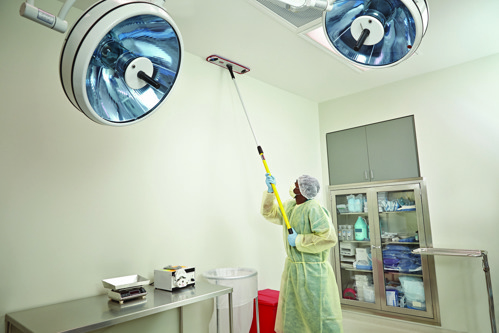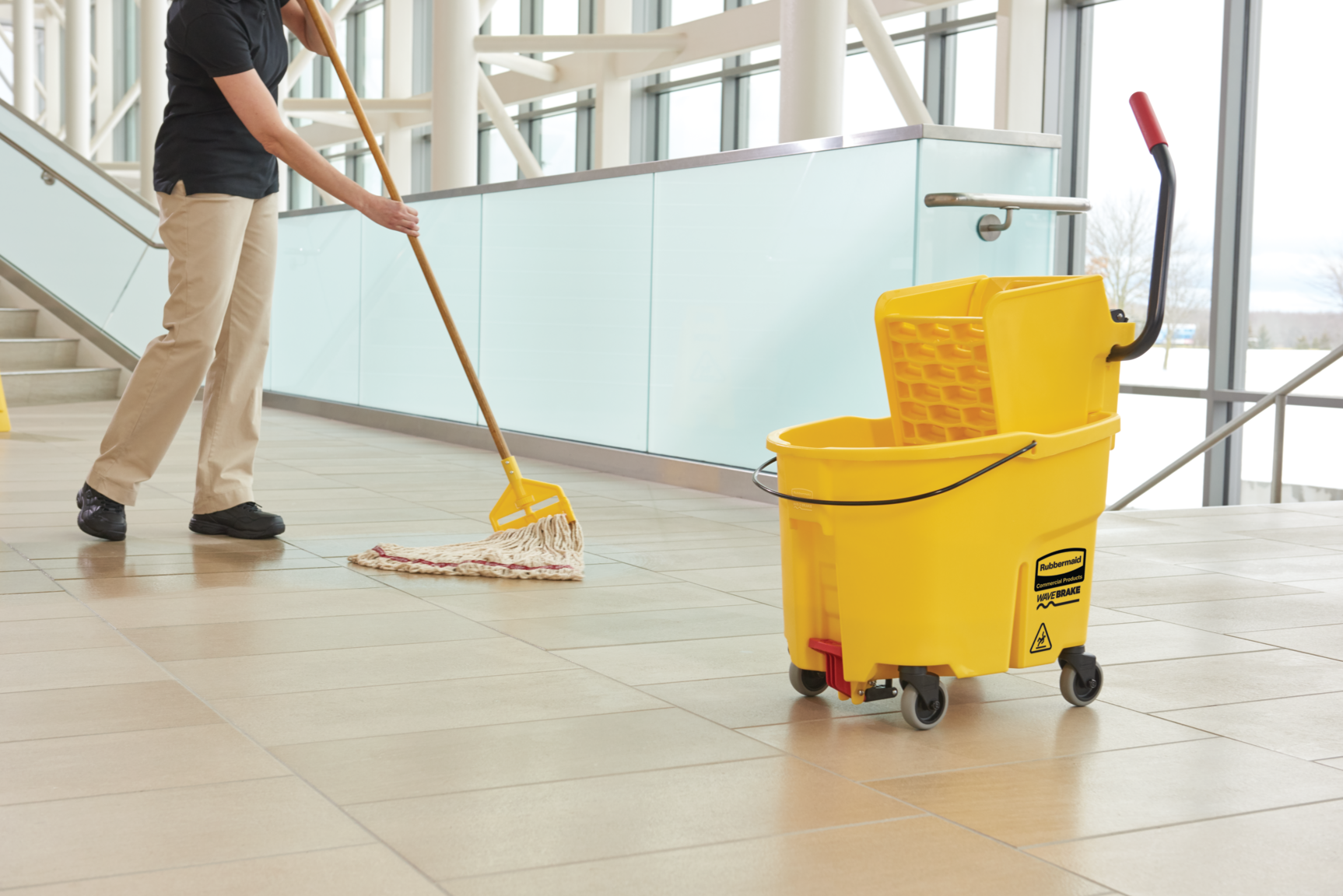Environmental hygiene guidelines for Australian hospitals are rigorous, intended to help prevent infection and control the spread of microorganisms throughout the hospital environment. Strict cleaning protocols must be followed with an eye both to complete hygiene and sanitising protocols and minimising use of antimicrobial cleaning solutions that can increase the strength of multi-resistant organisms (MROs). MROs are the main source of secondary infection in hospital settings. The National Health and Medical Research Council has guidelines for evaluating risks in different hospital environments, and recommendations for cleaning protocols for every type of item and surface from floor to ceiling.
- Very high risk cleaning protocols apply to areas with an outbreak of infection, even common infections if the population is high-risk such as immunocompromised or transplant patients, the very young, or the very old.
- High-risk cleaning protocols apply to areas vulnerable to infection such as emergency departments, burn wards, operating suites and other high-dependency or intensive care units (ICUs).
- Significant-risk cleaning protocols apply to general wards housing a mix of patients whose risk may or may not be high and/or defined.
- Low-risk cleaning protocols typically apply to domiciliary nursing services, rehabilitation or long-term care units and office environments within healthcare facilities.
Floors
Rubbermaid carries an entire complement of
mopping equipment suitable for use in hospital settings. Flexible mop handles allow for use in both large open areas and in rooms with extreme space constraints. Washable microfibre mops are able to be laundered hundreds of times between uses, and switched out easily to avoid cross-contamination or dirtying the charging station. They are compatible with many common hospital cleaning solutions, and can be a highly cost effective option in hospital settings with in-house laundry services. For spills, food or vomit stains, and other high-risk contaminants, Rubbermaid HYGEN
disposable microfibre mops can be substituted, allowing contamination to be swiftly and effectively disposed of.
High-touch objects
Various Rubbermaid hospital cleaning solutions can be employed to clean all types of objects in a hospital setting. For high-touch areas and after patient discharge, HYGEN
disposable microfibre cloths can get rid of most microbes and help sanitise a room. Use them on stains, spills, doorknobs, light switches, bed rails and elsewhere for extra protection in ICUs or for high-touch items used by or near vulnerable patients. Computers, keyboards and other commonly used items can be covered with protective cases that allow for quick cleaning and sanitising without risking electrical components.
 Walls and ceilings
Walls and ceilings
Walls can be cleaned before floors in hallways, rooms, and other areas. A large, manoeuvrable
cleaning cart with room for multiple mops, dusters, and other cleaning equipment as well as a charging station and various cleaning solutions allows an entire area to be cleaned from top to bottom once entered. Long handles can reach high ceilings, and walls can be scrubbed from the top down if needed. Notices on walls should be kept in protective glass or plastic that can also be cleaned, and there should be no loose paper pinned to walls or taped to doors.
Low-touch objects
Washable cloths, flexible dusting wands, and other cleaning solutions that both deliver environmentally hygienic results and protect workers from injury or strain can make cleaning low-touch items easy. The dual need for productivity and effectiveness demands that all healthcare cleaning solutions be designed to meet cleanliness standards and the needs of cleaning staff. Low-touch items may be cleaned less frequently depending on the risk level for the area and whether or not it is visibly soiled or located in a room where a patient has been recently discharged.
Overall cleaning recommendations for optimal environmental hygiene
To maximise the effectiveness of cleaning protocols and reduce the risks of contamination or contagion, the following rules should should be adhered to whenever possible.
- Clean from the top to the bottom of any room or hallway (ceiling, walls, objects, floor)
- Start at the furthest point inside the room and work towards the door (mop as you exit and do not step back into room until dry)
- Clean the dirtiest areas first, then cleaner areas (bathroom, patient room)
- Finally, clean high-touch items a final time on the way out of the room (light switch, door knob)
Australia healthcare environments must be scrutinised and cleaning protocols carefully enforced. All cleaning teams, whether in-house or third party, must be scrupulously trained in proper cleaning protocols. Healthcare staff in high-risk areas must comply with best practices for personal protective equipment (PPE) use, hand-washing and glove-changing to ensure the protection of vulnerable patients at all times. By combining these practices with a thorough and comprehensive cleaning schedule, environmental hygiene can be supported and the risk of infection mitigated. Using Rubbermaid products can help keep hospital staff and patients safer. For more information on Rubbermaid
hospital and healthcare cleaning solutions, contact our team today.

